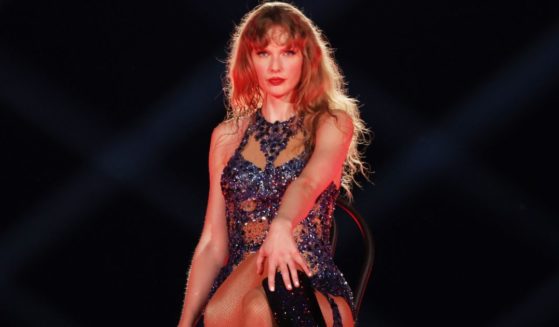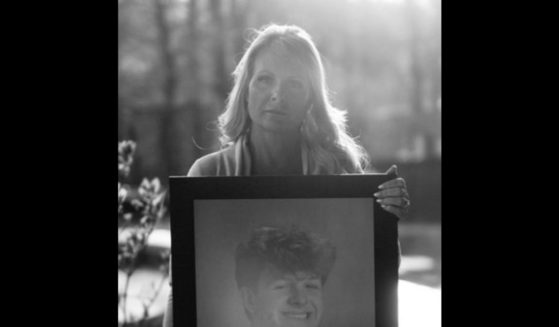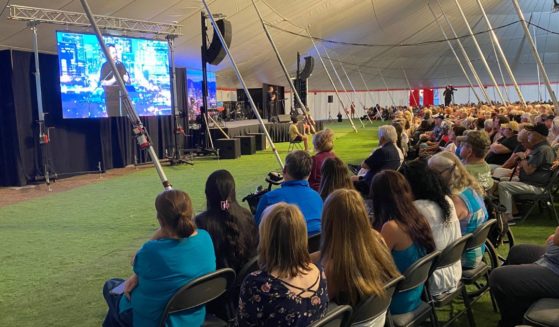Bring on the camp: Met Gala exhibit explores camp in fashion
NEW YORK (AP) — Louis XIV and Oscar Wilde, meet Bjork and Lady Gaga.
What quality do they share, across the centuries? An innate sense of camp — the aesthetic that’s being celebrated in the new fashion mega-exhibit at the Metropolitan Museum of Art’s Costume Institute, “Camp: Notes on Fashion.”
Think Bjork’s famous 2001 “swan dress,” which is in the show, and Gaga’s unforgettable 2010 raw meat dress, which isn’t (it was real meat, after all.) But lest you think camp is only artifice and theatricality, flamboyance and a desire to shock, Met curator Andrew Bolton wants you to think again.
“People are very quick to dismiss camp as being trite, glib, frivolous,” Bolton said in a weekend interview as he was putting finishing touches on the exhibit, which launches Monday evening at the star-studded Met Gala, to be co-chaired by Gaga herself, along with Serena Williams, Harry Styles, Gucci’s Alessandro Michele, and of course Vogue editor Anna Wintour.
“But it actually has a lot of history, it’s really serious, it’s political — and it’s tragic too, disguised as humor,” he said.
The exhibit is built around author Susan Sontag’s 1964 “Notes on ‘Camp,'” a 58-point essay which she dedicated to Oscar Wilde, the 19th century poet and playwright whose camp sensibility is also featured in the show. Camp “is not a natural mode of sensibility,” she wrote. “The essence … is its love of the unnatural, of artifice and exaggeration.”
She also called camp “something of a private code.” Bolton notes that in later years, it became mainstream, to the point where it lost much of its subversive meaning. Originating in gay culture, it slowly became assimilated into the culture at large along with other parts of gay culture, he says.
But every so often camp comes back as a powerful influence in fashion, Bolton says, and he thinks it’s having a new moment now, because it always returns at a time of political polarization and instability.
At a press preview on Monday, Bolton told the crowd that since he chose the subject of “camp,” everyone’s been asking two questions: “Why camp?” and “What IS camp?”
And so the exhibit, which features some 250 items, begins with history — and a grammar lesson. The term “camp” was first used as a French verb — “se camper,” or to flaunt — in the 17th century. In a 1671 Moliere play, the character Scapin tells a fellow servant to “Camp about on one leg. Put your hand on your hip. Wear a furious look. Strut about like a drama king.”
To remind us of one such drama king, there’s Louis XIV, in his official portrait: one leg in front, hand on hip, modeling his massive royal cloak, along with silk stockings and red-heeled shoes.
The exhibit then takes us from the verb to the adjective, “campish,” which had gay connotations in the 19th century, and then to the noun, where camp first enters a Victorian dictionary in 1909, defined as “actions and gestures of exaggerated emphasis. Probably from the French.”
Then comes the fashion. There’s “naive camp,” which is intended to be serious but failing, versus “deliberate camp,” intended to be, well, campy.
There are enormous feathered dresses — Sontag wrote that camp was “a woman walking around in a dress made of three million feathers” — by Armani and by Jeremy Scott, the latter surrounded by scores of attached butterflies. Scott, a specialist in camp, also is represented by a dress of dollar bills, and his McDonald’s-themed outfits for Moschino, where he serves as creative director.
From John Galliano, there are dresses that seem made of newspaper clippings and packing tape. And because the Palace of Versailles is seen as “a sort of camp (Garden of) Eden,” there’s a section of Versailles-style gowns by designers like Franco Moschino and Vivienne Westwood.
“Camp is ‘Swan Lake,'” Sontag wrote, so we also have Bjork’s famous swan dress by designer Marjan Pejoski, the bird’s long neck curving over the shoulder.
Representing what Sontag called “the convertibility of ‘man’ and ‘woman,'” designer Thom Browne contributes a man’s wedding outfit that combines a black tuxedo with a white filmy skirt.
And maybe there isn’t a Lady Gaga meat dress, but there’s a Jeremy Scott “prosciutto dress” (not real, this time), and his wacky TV dinner cape — with carrots, peas and corn on one side, mashed potatoes with butter on the other (they’re fake too, thankfully.)
Because camp “sees everything in quotation marks” (Sontag again), there is designer Virgil Abloh’s 2018 little black dress that says “Little Black Dress,” with boots that say “For Walking.”
And there’s a gigantic birthday cake-like dress of cascading pink tulle by Viktor & Rolfe, which says “Less is More” — because camp is, above all, about irony.
Bolton says he started thinking about camp two years ago when mounting his show on Rei Kawakubo of Comme des Garcons. He reread Sontag’s essay and was struck by how relevant it felt.
He was also inspired to mark the 50th anniversary this year of the 1969 Stonewall riots, a landmark moment in the history of gay rights.
Bolton notes that some designers have always embraced camp — Moschino, Scott, Marc Jacobs and Anna Sui, for example. “But what you’re seeing now is other designers adopting it, like Valentino, Armani. That’s when it shifts, when it’s going beyond a handful to a broader group.”
When the show opens to the public on Thursday, Bolton hopes visitors will be able to look beyond camp’s formal characteristics — irony, parody, artificiality and extravagance, to name a few — and see its broader meaning.
“It’s all of that,” he acknowledges. “But it’s much more.”
___
Online: https://www.metmuseum.org/exhibitions/listings/2019/camp-notes-on-fashion
The Western Journal has not reviewed this Associated Press story prior to publication. Therefore, it may contain editorial bias or may in some other way not meet our normal editorial standards. It is provided to our readers as a service from The Western Journal.
Truth and Accuracy
We are committed to truth and accuracy in all of our journalism. Read our editorial standards.












